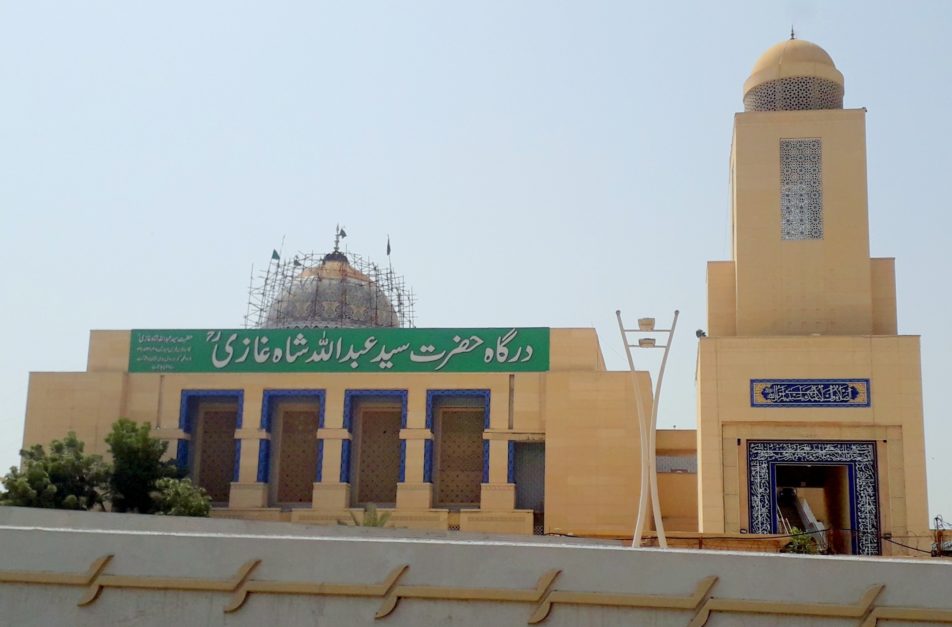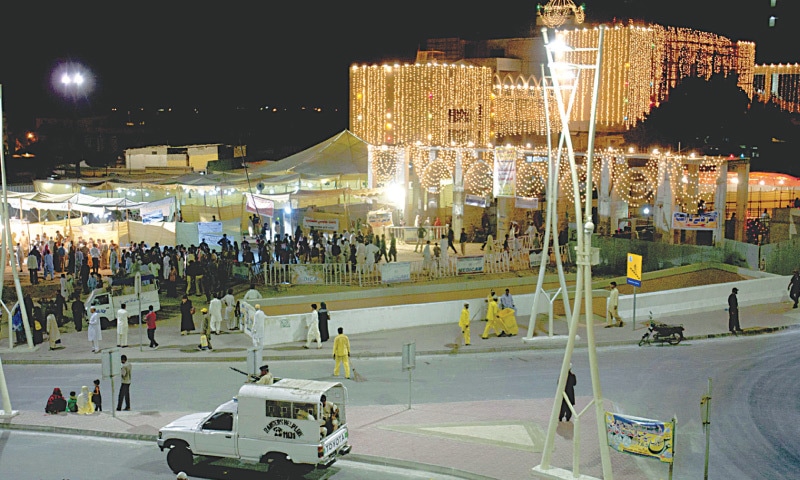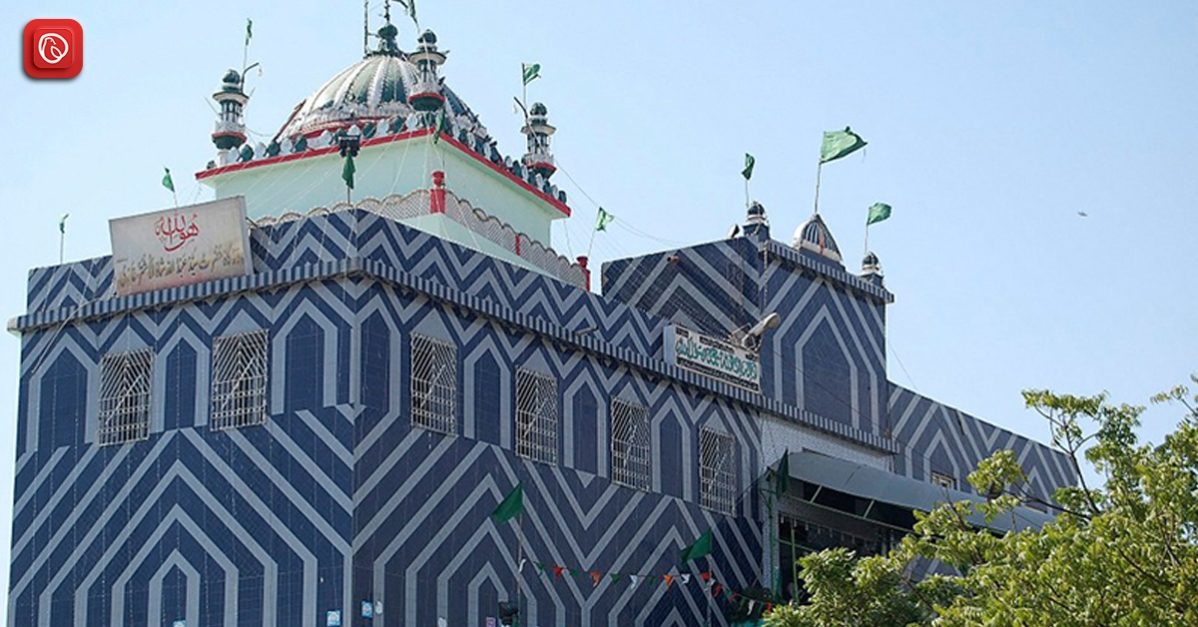Located in Clifton, Karachi, the Abdullah Shah Ghazi shrine is an iconic and revered landmark that predates the city itself. The sacred site, adorned with a distinctive green cupola, attracts countless visitors throughout the year, particularly on Thursdays.
Abdullah Shah Ghazi, a revered Sufi saint, finds his eternal rest here, and the shrine’s unique architecture showcases a blend of tradition and modernity. Join us as Graana.com will explore the rich history and captivating story of this timeless place of worship in the heart of Karachi.
Location
The construction of the Shah Gazi shrine is truly exceptional and sets it apart from other shrines in Karachi. Its distinctive architectural style defies categorisation, making it a one-of-a-kind structure. The uniqueness has made the shrine a major draw for visitors who travel from distant locations to experience its beauty and complexity. Over time, the shrine has undergone significant changes, resulting in a distinct departure from its original mausoleum.
History of Abdullah Shah Ghazi Shrine

The history of the Abdullah Shah Ghazi shrine in Karachi, Pakistan, is a fascinating journey from a small, modest structure to a revered place of worship. Prior to the mid-1950s, this sacred site was a tiny hovel on a sandy hill in what we now call the Clifton View area of Karachi. At that time, it bore little resemblance to the shrine we know today. The transformation of the shrine began in the 1940s and was completed in the early 1950s.
Abdullah Shah Ghazi’s shrine has always been a place that attracts people from diverse religious backgrounds, including Muslims, Christians, and Hindus, who come here to pay their respects. There are differing accounts of Abdullah Shah Ghazi’s origin: some believe he was a Bedouin trader who arrived in Sindh with the earliest Arab invaders, while others claim he came from Iraq as a soldier and fought alongside Muhammed Bin Qasim against Raja Dahir.
Regardless of his origin, Abdullah Shah Ghazi settled in Sindh, along with his brother Syed Misri Shah, and they both embraced the Sufi sect of Islam. Over time, Abdullah Shah Ghazi was captured and killed by his adversaries. His followers laid him to rest on a hill overlooking the shore where he first arrived in Sindh, near the present-day Clifton and Ocean View areas in Karachi.
Abdullah Shah Ghazi History
Abdullah Shah Ghazi, also known as Abdullah Shah Abdul Latif Bhittai, was a revered Sufi saint and a descendant of the Prophet Muhammad. He is particularly venerated in the Sindh region of Pakistan. Here is a brief overview of Abdullah Shah Ghazi’s history:
- Birth and Lineage: Abdullah Shah Ghazi was born in 720 CE in Medina, Saudi Arabia. He belonged to the family of Hazrat Imam Hasan, the grandson of Prophet Muhammad. His full name was Abdullah Shah Abdul Latif Bhittai.
- Migration to Sindh: Abdullah Shah Ghazi migrated to the Indian subcontinent, particularly the region that is now Sindh, along with his uncle Syed Muhammad Shah, who is commonly known as Lal Shahbaz Qalandar. They settled in the city of Karachi.
- Spiritual Journey: Abdullah Shah Ghazi dedicated his life to spirituality and the teachings of Islam. He became known for his ascetic lifestyle, deep meditation, and devotion to God. He is considered a Sufi saint, and his shrine in Karachi is a place of pilgrimage for many devotees seeking blessings and spiritual solace.
- Death: Abdullah Shah Ghazi passed away in the 8th century. His exact date of death is debated, but it is generally believed to be 768 CE (aged 47–48). His shrine, located in Clifton, Karachi, is a major center of religious and cultural significance.
Before Transformation
Initially, the shrine remained modest in size, but its popularity continued to grow among devoted followers, both Muslim and Hindu. In the 1960s, as Karachi experienced an influx of people from nearby regions like Punjab, Sindh, and Khyber Pakhtunkhwa, the shrine began to expand. This period also witnessed the emergence of festivals, musical performances, and small shops in the vicinity of the shrine.
Expansion During Bhutto Government
During Z.A. Bhutto’s government from 1971 to 1977, the shrine underwent significant expansion and became Karachi’s largest Sufi shrine, welcoming visitors from Muslim, Christian, and Hindu communities. However, during the conservative Ziaul Haq government (1977-1988), the shrine suffered neglect, leading to its deterioration and an increase in illegal activities in the surrounding area.
Renovation Project by Regional Government
In 2005, the regional government initiated an extensive restoration, cleanup, and renovation project for the shrine, which was completed in 2007.
Architectural Significance
Initially, the shrine wasn’t even recognized as a formal shrine; it was merely the burial site chosen by the followers of the Sufi saint Shah Gazi after his passing. The architectural changes we witness today are relatively recent, with the dome being incorporated only in the last century. Various Pakistani governments have executed expansions and improvements over the years.
The shrine is built on a raised base at ground level, with the saint’s resting place underground. It features a tall, square chamber with a green-and-white striped dome adorned with Sindhi tilework, flags, and buntings. People of all backgrounds and faiths visit the shrine and often offer flowers at the silver railing around the burial site.
In the mid-20th century, the shrine was a simple structure on a sandy slope in Clifton. Syed Nadir Ali Shah, a Sufi follower of Lal Shahbaz Qalandar and former overseer of the shrine, oversaw its construction and expansion. He added the dome, windows, a mosque, a communal kitchen (Langar Khana), a court for Qawwali performances, accommodations for pilgrims, and a long staircase leading to the shrine.
Over the years, the shrine became a popular destination for people from diverse backgrounds, offering free meals and hosting spiritual events like Qawwali performances. In 1962, the Auqāf department took over its administration, and in 2011, Bahria Town, a Pakistani development company, was entrusted with exterior renovations, which received mixed reactions from Karachi residents.
Tourist Attractions at Abdullah Shah Ghazi Shrine

The Abdullah Shah Ghazi Shrine in Karachi, Pakistan, offers various attractions and amenities, making it a popular destination for visitors:
- Spacious Courtyard: The shrine features a large courtyard where many people can gather simultaneously. The area is well-maintained, providing a clean and peaceful environment for all visitors.
- Tomb of Abdullah Shah Ghazi: The central attraction is the tomb of Abdullah Shah Ghazi, drawing reverence from all who visit. It’s a place of inclusivity, welcoming people from all backgrounds.
- Chilla Gah and Chasma: The shrine also encompasses the Chilla Gah and Chasma, which even those not directly affiliated with consider sacred, further enhancing the shrine’s mystique.
- Historical Underground Caves: Inside the shrine, underground caves await, serving as a testament to its ancient history, although their original purpose remains somewhat uncertain.
- Enhanced Security: After a past bomb attack, security measures were heightened to ensure the safety of visitors and the sanctity of the site.
- On-Site Mosque: A mosque within the shrine complex allows visitors to offer prayers, enhancing the spiritual atmosphere.
- Visitor Parking: There’s a parking facility available for the convenience of those arriving by vehicle.
- Annual Urs Festival: The annual Urs festival is a significant event at the shrine, attracting visitors from across Pakistan. It features religious ceremonies and the distribution of free food to the less fortunate, promoting unity and compassion within the community. It is one of the most popular traditional festivals of Pakistan.
In essence, the Abdullah Shah Ghazi Shrine is not only a place of religious importance but also a cultural and communal gathering spot with a range of attractions and conveniences for visitors of all backgrounds to enjoy.
FAQs
Following are some of the FAQs regarding Abdullah shah Ghazi shrine:
Who was Abdullah Shah Ghazi, and why does the shrine bear his name?
Abdullah Shah Ghazi, a venerated Sufi saint believed to have arrived in Sindh, Pakistan, from Arabia centuries ago, lends his name to the shrine because it encompasses his tomb. This tomb has become a revered site of pilgrimage for those in search of blessings and spiritual solace.
What is the significance of the annual Urs festival at the shrine?
The annual Urs festival at the Abdullah Shah Ghazi Shrine is a religious celebration that marks the saint’s death anniversary. During this event, devotees gather to offer prayers, seek blessings, and distribute free food to the needy, emphasizing the Sufi values of unity and compassion.
Are non-Muslims allowed to visit the shrine?
Yes, the Abdullah Shah Ghazi Shrine is open to people of all religions and backgrounds. It is a place of inclusivity and welcomes visitors regardless of their faith. Many Christians and Hindus also visit the shrine to pay their respects.
What are some common rituals and practices followed by visitors to the shrine?
Visitors often perform various rituals, such as tying threads or cloths at the shrine’s grill as a symbol of their wishes and prayers. They may also offer flowers and light candles as acts of devotion. Many people walk barefoot in the shrine’s vicinity as a sign of humility and respect.
What is the architectural style of the shrine, and how old is it?
The shrine’s architectural style features a green-and-white striped dome adorned with Sindhi tilework. Over the centuries, it has undergone several additions, including the dome. This reflects both historical and contemporary influences, even though its about a thousand years old in its current form.
For more details visit Graana.com.




